WANDERLUST

Everyone knows Charleston, South Carolina, is one of the United States’ most historic cities, but there’s a lot more than history occupying the town’s 1,600 pre-Revolutionary War buildings, including new breweries, distilleries and clubs. Charleston has become a Williamsburg with bars. And James Beard award-winning restaurants. And one-of-a-kind shops and galleries.
Of course, there’s still plenty of history dripping from the Spanish moss on every corner waiting to be discovered.
So here’s 10 fascinating facts about this quirky town where Stephen Colbert grew up and Bill Murray is a part owner of the baseball team.
1. Charleston was started as a colony of Barbados.
In the 1660s, Barbados, the tropical island off the coast of Venezuela, was the richest speck of land on Earth. And the most congested. Every inch of the tropical island was covered with 800 sugar plantations. An incredible 500 windmills used renewable energy to convert the sugar cane to the “white gold” used to sweeten tea throughout Europe. The little island’s population was larger than New England’s, but the majority of people were enslaved Africans, who did all the backbreaking labor to make plantation owners rich. The island was also starving.
Because every inch of land was used for sugar plantations, Barbados couldn’t support the beef and crops needed to feed the island’s population. So, much like the other powers in Europe, Barbados established a colony to support and feed the homeland. The colony these Barbadians started eventually came to be the city of Charleston.
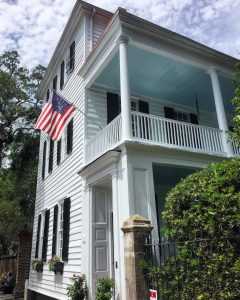
2. You can see the many influences of Barbados all over Charleston.
It’s there in the names of the streets dating back to the Barbadian founders, in the vividly colored buildings of pink, yellow and lavender giving the town a Caribbean feel, and in the basic architecture of the houses, which came to be called the “Charlestown Single House.”
This is the famous one-room-wide house facing the wind. All the rooms in the house opened to a piazza, or porch. The windows on both sides of the house could be opened to create a much needed draft in the heat of summer. Any walking or carriage tour of Charleston will show you dozens and dozens of these Charleston single house homes — but the idea for them came from Barbados.
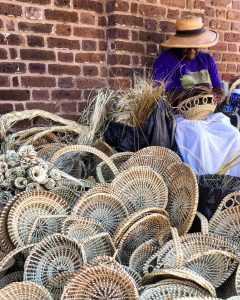
3. The roofs of the piazzas on all the Charleston Single Houses are painted “haint blue.”
African slaves believed this color warded off evil spirits and they wouldn’t work in a house that didn’t have it.
4. Charleston was the largest slave port in America.
Any history of slavery in America begins in Charleston. Because it was founded by a slave plantation economy from Barbados, Charleston took on the same model and became the principle port where slaves entered North America with some 40 percent of them passing through Charleston. By 1860, there were 400,000 slaves in South Carolina, more than 57 percent of the population; of the 15 people in the United States who owned 500 slaves or more, eight were in this state.
In Charleston’s early days, slaves could be paraded and sold on any street corner that could gather a crowd. By July 1, 1856, abolitionists forced the sale of slaves off public streets, although 40 slave marts were established for private sales. Only one remains intact and now houses the Old Slave Mart Museum, a place telling this chapter of the American story.
Enslaved Africans began their journey by sailing the “Middle Passage” in filthy, overcrowded ships filled with disease. Those who survived, were brought to Sullivan’s Island in Charleston’s harbor, where they were interned to weed out the sick, weak and dying. The survivors were then placed in a baracoon — jails, where they would be fattened up, washed, clothed, have gray hair dyed black and their bodies greased, all to increase their market value on the auction block. Ryan’s Slave Mart had one of the largest of the baracoons, and today it forms the heart of the museum.
A top slave with a skill like carpentry could fetch $1,500 — about $38,000 in today’s value. A young attractive light-skinned woman could sell for even more. “If God has bestowed beauty upon a slave woman, it will prove her greatest curse,” one slave woman wrote.
It is an odd sensation to be inside the Slave Mart discovering the ghastly history that took place here, just a few hundred feet from carefree tourists clattering in horse drawn carriages.
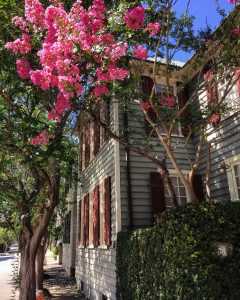
5. Charleston freely acknowledges the many accomplishments contributed to the city by enslaved Africans.
Unlike Washington D.C., where politicians seldom mention that the White House was built by slaves, in Charleston the contributions of enslaved Africans are a principal part of any discussion of the city. The Charleston Museum (the oldest museum in the United States), the Fort Sumter museum, and on home and plantation tours, teaches that many enslaved Africans were skilled craftsman — carpenters, stone masons, brick makers, gardeners, painters, blacksmiths, iron workers, and plasterers. Not only did slaves build this incredible city of homes and gardens, but they were also responsible for its wealth.
South Carolina was the only state that imported slaves for their knowledge. Since it was the principle rice growing state in America, they imported slaves from the Windward Coast of Africa, from Senegal to Sierra Leone and Liberia, because these people had been growing rice in their homeland for a thousand years. Rice production was tedious work — 10 times the labor effort of growing cotton. But the profits were gigantic. Charleston became the rice king of America with 120 ships arriving in port every day. By the time the American Revolution started in 1775, Charleston was the richest city in all the colonies and the fourth largest.
6. The planation at Middleton Place holds family reunions — for descendants of former masters and slaves.
One spot that does an excellent job of illustrating how much Charleston owes to enslaved Africans is Middleton Place. The plantation home was burned in the Civil War and today Middleton Place is best known for having the oldest formal garden in the country. Gardens in the 18th century were based more on symmetry and contrasting the many shades of green to be found in hedges, trees and lawns, so this is not a garden of colorful flower beds, but a subtle, mathematical creation.
Like everything else from this period, these magnificent gardens were built and maintained by enslaved Africans. Eliza’s House, a freedman’s house from 1870, has been restored into a small museum telling their story. The names of all 2,800 slaves who worked at Middleton Place from 1738 to the end of the Civil war are listed, along with the jobs they held, and, chillingly, the price that was paid for them. There is Judy, a house wench and seamstress purchased for $70, and Cuffy, a carpenter who was bought for $60. Old Jenny came for just $15 and Paul, her son, a gardener, fetched $70.
Every year, Middleton has a reunion of the family members who trace their history back to the Middleton name. Since 2006, the descendants of the 2,800 slaves who lived there have been researched and also invited; some 200 attended in 2016.
7. Charleston was a major battleground in the American Revolution.
Mention the Revolution, and most people think of Boston, Paul Revere, Philadelphia and the Liberty Bell, but there were actually 135 engagements during the Revolution in South Carolina, more than in all New England.
As the richest city in the colonies, Charleston was a major prize and the British sent an expedition of nine ships to capture it in June 1776. Quick thinking U.S. fighters built a fort out of rubber-like palmetto palm tree trunks and sand. To the disgust of the British, their cannonballs bounced off the soft palm trees, or got imbedded in the sand, while the U.S. guns were able to do great damage to the British Navy. This attack failed, but in 1779 the British sent an even larger fleet and laid siege to Charleston. The U.S. troops surrendered in what was to be the largest colonial defeat of the war.
8. Today, historic Charleston looks so much like it did during the Revolution, that when Mel Gibson filmed “The Patriot” here, all he had to do was take down signs and put mulch on the streets.
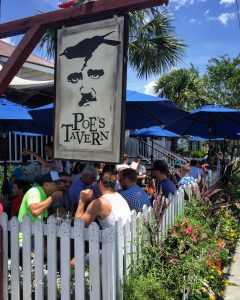
The fire department wouldn’t let him remove fire plugs, so every time there was a fire plug in a scene, he placed a woman in a big hoop skirt directly over it.
Fort Moultrie, where the first battle took place, disappeared long ago, but a second fort still stands and a museum tells the role this spot had in three wars. After visiting, stop by the Poe Tavern for a drink. Edgar Allen Poe was stationed at Fort Moultrie in 1827 (although to escape gambling debts and family problems, he had enlisted in the army as Edgar A. Perry). Several of his famous short stories were written here or based on the area.
9. Another revolutionary war battlefield is now the hippest place in town.
The real fighting during the siege of Charleston in 1779 was right downtown in what is now Marion Square. Not that long ago, there was little for tourists north of this park, but today, the Upper King Street neighborhood is the hippest hood in town and booming with new eateries and clubs, while the park hosts a weekly farmer’s market and art shows.
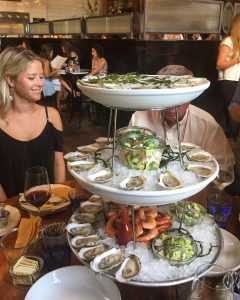
When it opens in spring 2018, Hotel Bennett will rise from the park in attractive tiered building offering 179 luxury rooms and suites, many with spectacular views and balconies overlooking Marion Square. With a rooftop pool, a 1,000-seat music venue, view bars, and indoor and outdoor meeting space, the hotel will have the grandest location in Charleston.
The eight blocks north of here are now one long string of James Beard restaurants, music clubs and lowcountry cuisine cafes with tap houses and distilleries sprinkled in. It’s packed with people and even lines on weekends, and busy every night. The Ordinary deserves all the raves. From their spectacular shellfish tower signature dish to oyster sliders, the restaurant is simply amazing, transforming an old bank into a chic multi-level shellfish house. The Macintosh was the first big name on the street (Executive Chef Jeremiah Bacon is a five-time James Beard semifinalist). How could you not love a place that has a Bacon Happy Hour? Prohibition is a 1920s style speakeasy with live music six nights a week ranging from bluegrass to Cuban jazz.
There are at least seven breweries in downtown Charleston with more on the way. On Upper King, try the Charleston Beer Works and the spectacularly named “Closed for Business” — both are tap houses with a wide selection of local beers, which, like anywhere in the south, tend to run to light, pales, sour, fruit and ambers.
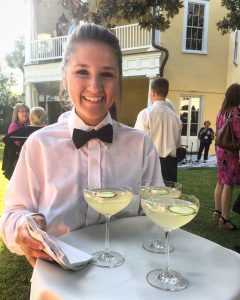
10. The Civil War started in Charleston with the type of “battle” all wars should have — no one was killed.
Everyone knows the Civil War started at 4:30 a.m. on April 12, 1861, when Confederate forces fired the first shells at Fort Sumter. Some 3,000 bombs later, the United States forces surrendered. No one had been killed. Less well known is that the U.S. forces came back in April 1863 and commenced the largest bombardment in U.S. history. For 20 months, the Union hurled 7 million pounds of metal at Fort Sumter, and were never able to take it. They also bombarded Charleston in what was to be the longest bombardment of any U.S. city in history, destroying much of the town. And regiments of African American troops assaulted Fort Wagner which protected Charleston, in an attack depicted in the movie “Glory.” Nothing succeeded, and Charleston was only taken when Sherman marched to it from Atlanta.
Of course, Charleston had also been destroyed by a fire in 1838 with 1,200 buildings burned, and then was hit by Hurricane Hugo in 1989, which damaged 80 percent of the homes and left 50,000 people homeless. And if that’s not enough, Charleston is also on a major geologic fault and an earthquake in 1886 destroyed much of the city (and many experts think Charleston is way overdue for another).
All of these historic incidents are depicted at Fort Sumter National Monument. A visit is mandatory, and free — if you swim. But it costs $21 if you want to take the hour ferry each way.
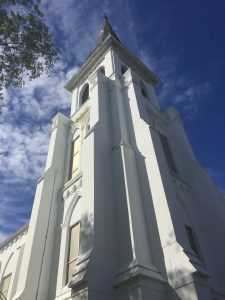
Unfortunately, yet another disaster — this one manmade — occurred on June 17, 2015, when a crazy psychotic killed nine members of a Bible study group at the Emanuel AME church, just a few blocks from Marion Square.
Through all of these tragedies, Charleston has survived, endured and come out stronger and better.
On the second anniversary of the shooting, it was announced that famed architect Michael Arad, designer of the National September 11 Memorial in New York, will create a piece to honor the victims of this tragic shooting.
It is perhaps because Charleston has endured so much that it is so beautiful. Walking its quiet backstreets on tree-shaded brick sidewalks is one of the great joys of visiting this city. On every block, there’s something to admire. Peek through a gate to see a private garden, duck down a tree-covered alley, wander through a graveyard, or read the plaques mounted on hundreds of homes to see who lived here. There is no place else quite like Charleston.
IF YOU GO:
The Charleston Convention & Visitors Bureau is one of the best in the nation with a large, incredible visitor’s center packed with helpful advice.
The Hyatt House and Hyatt Place share a common courtyard and are an ideal place to stay, within walking distance of the historic district, and smack in the center of the exciting new restaurants and clubs along Upper King Street. The Hyatt House has a kitchen and order your own omelet breakfast. Bulldog Tours does excellent walking tours of the historic district.
THE NEWS










